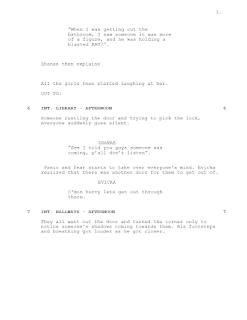Preproduction
For my film portfolio, me and my group-mates (Nia, Evicka, and Ja'Niyah) are producing a movie intro for a horror/thriller movie while following the conventions of the genre. Before we all began the project, our groups were picked by us by doing interviews on our classmates. We came to the conclusion of our groups based on the questions asked. A few days later, our teacher gave everyone a group contract that had to be signed by the person it was given to, out parent/guardian, and our teacher then given back to the teacher. After this, we were given the assignment of making a short story based around our intro (we basically gave it a middle and end). After that was turned in, we researched different movies and analyzed their intros to get an understanding of what these films are expected to have. Following this, we made our script and storyboard.
Storyboard
In the story board process, we made a Word document with a shot by shot analysis chart. We split the chart up into categories, each taking one, then came as a group to decide on the description. After we did this, we went into StudioBinder and placed the information in the storyboard feature.
Description of Storyboard
Mise-en-Scene
For this film opening in the horror genre, we dwelled on locations but decided on areas around the school. We chose the library and the main floor hallway. Props we will use will be things like books, textbooks, pencils, papers and things like that. Since filming will take place during school hours, costuming will consist of our CTA uniform with little to no makeup. We will utilize the lighting that is already there in our various locations.
Cinematography
The cinematography plays a big role in our film. We have from February 22nd to March 4th get our shots and scene. We need to take into consideration on how much shots we need to get for our scenes within the time provided. When filming, we will use our phones and we will use tripods if necessary. Medium shots, long shots, establishing shots, close ups, low angle shots, and tracking will be used.
Sound
Sound creates mood/feeling for films, bringing it together with the other components. For the sound portion, we will use dialogue between actors, conversations, that will get picked up by the phone being recorded with, an unsettling music score, utilizing silence, and using a voice over of someone talking.









